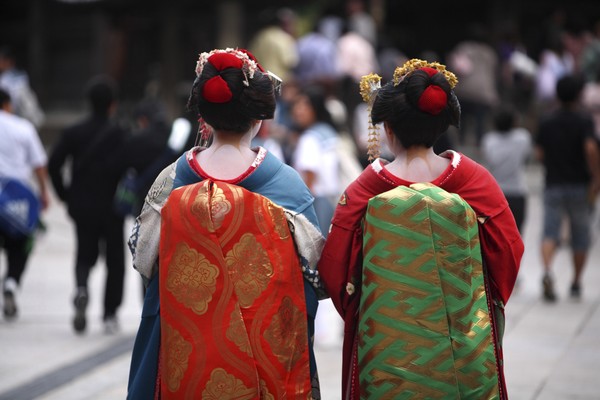 One of the most iconic symbols of Japan is an ancient one—Mt Fuji. This mountain is located at the center of the southern coast and is Japan’s highest mountain (at 12,388 ft). There is a torii gate at the summit, and over hundreds of thousands of people climb it in warmer weather. However, Mt Fuji is often wreathed in clouds and can’t be seen from the ground. When the air is clear, Fujisan can be seen from Tokyo, 60+ miles away. You can check the view on any of these webcams!
One of the most iconic symbols of Japan is an ancient one—Mt Fuji. This mountain is located at the center of the southern coast and is Japan’s highest mountain (at 12,388 ft). There is a torii gate at the summit, and over hundreds of thousands of people climb it in warmer weather. However, Mt Fuji is often wreathed in clouds and can’t be seen from the ground. When the air is clear, Fujisan can be seen from Tokyo, 60+ miles away. You can check the view on any of these webcams!
- Mt Fuji is a sacred site for the Japanese religion of Shintoism. There are many Shinto shrines around Fujisan, from the base to the peak. These shrines honor the supernatural deities (kami) of Shintoism; on Mt Fuji, they honor the kami of Princess Konohanasakuya, symbolized by the Cherry Blossom. Read about Princess Konohanasakuya here. What do you think the role of environmental disasters (earthquakes, monsoons, typhoons, etc.) historically plays in people’s spiritual beliefs?
- Mt Fuji is a UNESCO World Heritage Cultural Site. It has, “inspired artists and poets and been the object of pilgrimage for centuries.” Read more about how Fujisan has inspired countless people. Perhaps the most famous art of Mt Fuji is by Hokusai, who painted 36 Views of Mt Fuji. Take a look at these beautiful paintings—and photos of Mt Fuji. Which ones are your favorites?
- Mt Fuji is a dormant volcano. It has been relatively inactive since 2001. It is also a stratovolcano, as we learned about with Volcano Poas, Costa Rica. The last time Fujisan erupted was in 1707; volcanic ash fell as far as Tokyo. Read of the volcanic activity on Mt Fuji. Do some quick math—when would you next expect Fujisan to erupt?
- Take this Mt Fuji Quiz. Be sure to click through and read each fact about Mt Fuji. How did you do?
Ready to see it for yourself? Explorica can help with that! Take your students there with our Japan Highlights tour.

